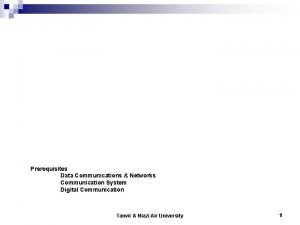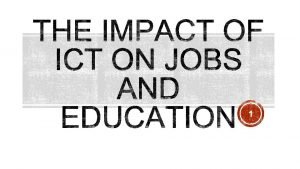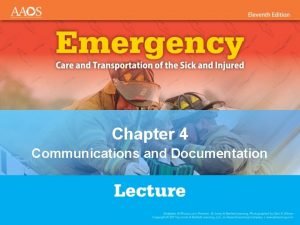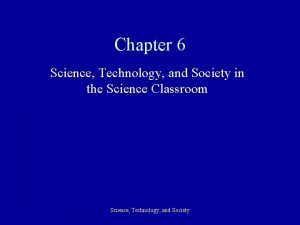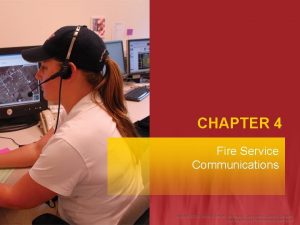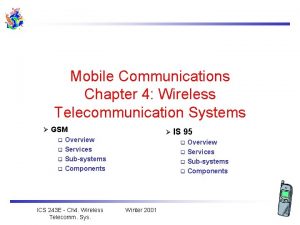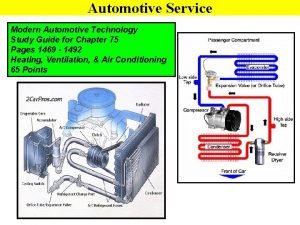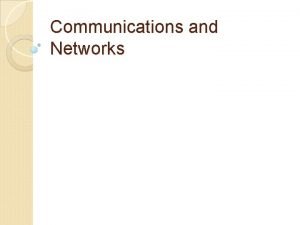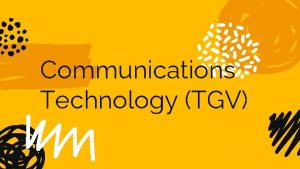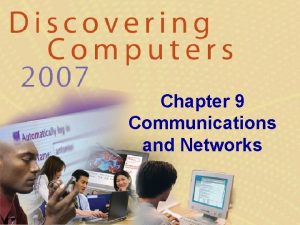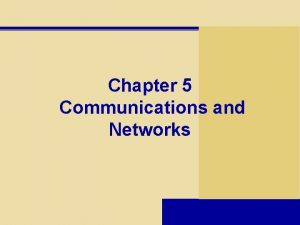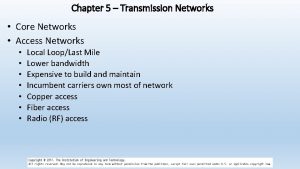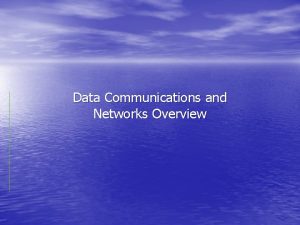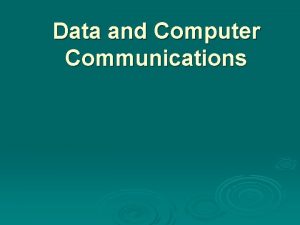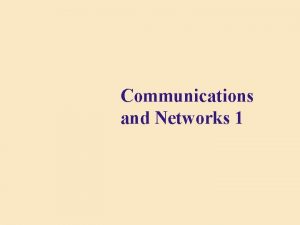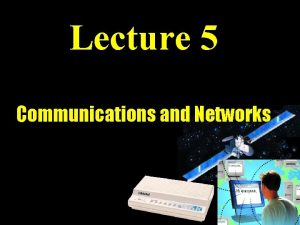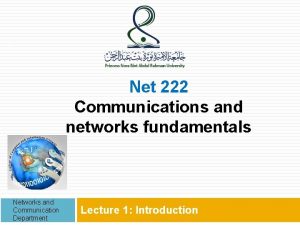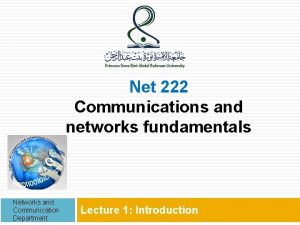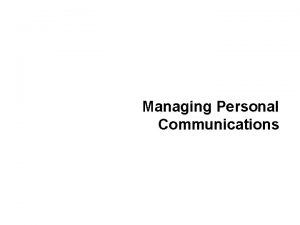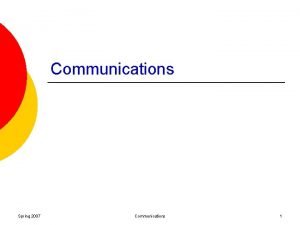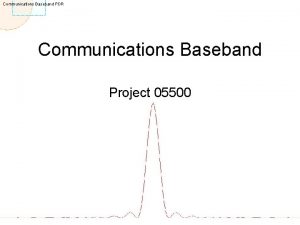Chapter 7 Communications Technology Networks and Communications Key






















- Slides: 22

Chapter 7: Communications Technology Networks and Communications

Key Questions 1. 2. 3. 4. 5. How do digital and analog data differ, and what does a modem do? What are some offerings of new telecommunications? What the types of wired and wireless channels and some types of wireless communications What are the benefits of networks, and what are their types, components, and variations? What are important issues in cyberethics

I. Using Computers to Communicate A. Analog Signals: Continuous Waves B. Digital Signals: Discrete Bursts C. The Modem: Today’s Compromise D. Choosing a Modem 1. External versus internal 2. Transmission speed E. Communications Software

Analog and digital signals

How modems work

I. Using Computers to Communicate F. Transmission media 1. ISDN lines 2. DSL (ADSL) 3. T 1 Lines 4. Cable modems 5. Satellite dishes G. Bandwidth Amount of info transmitted within a given period of time Broadband: high speed connections

Connection competitors Approximate time to transfer a 40 MB file

II. Communications Channels A. Twisted-Pair Wire B. Coaxial Cable C. Fiber-Optic Cable D. Microwave & Satellite Systems E. Other Wireless Communications a. GPS (Global Positioning System) b. Pagers

Three types of wired communications channels Twisted-pair wire (top right): poor protection against electrical interference. Coaxial cable (top left): better protection against electrical interference. Fiber-optic cable (bottom left): Thin glass strands transmit light These strands can carry computer and voice data over long distances.

Microwave systems

Communications satellite

GPS receiver: handheld compass

Data Compression b Removing repetitive patterns to reduce the size b Lossless compression: Compressed data can be decompressed back to the same original – MS Word and Excel files, etc b Lossy compression: loss of accuracy for a high degree compression – graphics and video files b Compression Standard: • Joint Photographic Experts Group (JPEG): for still images (file extension: . jpeg or. jpg) • Motion Picture Experts Group (MPEG): for moving images (file extension: . mpeg or. mpg)

III. Communications Networks A. 1. 2. 3. B. C. Types of Networks Wide area network (WAN) Metropolitan area network (MAN) Local area network (LAN) Network Operating Systems Hosts & Nodes, Servers & Clients

IV. Local Networks A. 1. 2. B. 1. 2. 3. 4. 5. Types of LANs Client/Server Peer-to-Peer Components of a LAN Connection or cabling system Microcomputers with interface cards Network operating system Other shared devices Bridges, routers, and gateways

Components of a typical LAN

IV. Local Networks b D. 1. 2. 3. Topology of LANs Star network Ring network Bus network

Star Network

Ring network

Bus network

Serial data transmission

Parallel data transmission Data resembles cars moving in separate lanes at the same speed on a multilane freeway.
 Datagram vs virtual circuit
Datagram vs virtual circuit Digital communications and networks impact factor
Digital communications and networks impact factor Basestore iptv
Basestore iptv Communications networks manufacturing
Communications networks manufacturing Classify computer networks based on transmission technology
Classify computer networks based on transmission technology What is information in ict
What is information in ict Key resources examples
Key resources examples Key partners key activities key resources
Key partners key activities key resources Brake system diagnosis and repair
Brake system diagnosis and repair Chapter 80 brake system technology answers key
Chapter 80 brake system technology answers key Chapter 4 communications and documentation quiz
Chapter 4 communications and documentation quiz Chapter 3 network protocols and communications
Chapter 3 network protocols and communications Nature of science technology and society
Nature of science technology and society 7 ionic and metallic bonding
7 ionic and metallic bonding Chapter 7 ionic and metallic bonding assessment answer key
Chapter 7 ionic and metallic bonding assessment answer key Euler
Euler Wired and wireless media
Wired and wireless media Chapter 4 fire service communications quiz
Chapter 4 fire service communications quiz Communications chapter
Communications chapter Modern automotive technology answer key
Modern automotive technology answer key Ethical and social issues in information systems
Ethical and social issues in information systems Chapter 11 study guide chemistry stoichiometry answer key
Chapter 11 study guide chemistry stoichiometry answer key Means and extremes of proportions
Means and extremes of proportions

